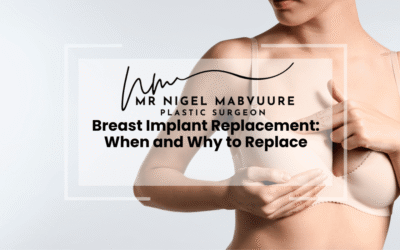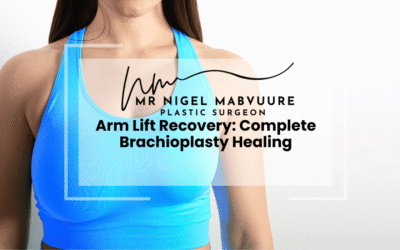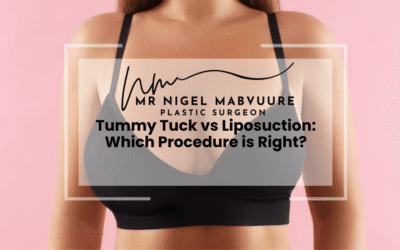Key Takeaways: Facial Fat Grafting
- Facial fat grafting uses your own fat cells to restore volume lost through aging, providing a natural alternative to synthetic fillers
- The procedure involves three stages: harvesting fat from donor sites, processing the fat, and strategically injecting it into facial areas
- Benefits include natural-looking results, longevity (50-70% of transferred fat typically remains permanently), and regenerative properties
- Common treatment areas include cheeks, temples, tear troughs, nasolabial folds, lips, and jawline
- Costs in Liverpool typically range from £2,500 to £5,000 depending on treatment extent and complexity
- Recovery takes 1-2 weeks for most visible swelling and bruising to subside, with final results visible after 3-6 months
Table of Contents
- Understanding Facial Fat Grafting: A Natural Approach to Rejuvenation
- How Facial Fat Transfer Works: The Procedure Explained
- Benefits of Choosing Fat Grafting Over Synthetic Fillers
- What Areas Can Be Treated With Facial Fat Grafting?
- How Long Does Facial Fat Grafting Last? Longevity Explained
- Is Facial Fat Transfer Safe? Risks and Considerations
- Facial Fat Grafting Cost in Liverpool: What to Expect
- Recovery and Aftercare: Maximizing Your Fat Transfer Results
Understanding Facial Fat Grafting: A Natural Approach to Rejuvenation
Facial fat grafting, also known as fat transfer, represents one of the most innovative approaches to natural facial rejuvenation available in Liverpool today. This procedure utilises your body’s own fat cells to restore volume and youthfulness to the face, addressing the natural volume loss that occurs with ageing.
As we age, our faces naturally lose fat, particularly in the cheeks, temples, and around the eyes. This volume depletion, combined with the effects of gravity and reduced collagen production, contributes significantly to the appearance of facial ageing. Unlike synthetic fillers, facial fat grafting uses autologous tissue—fat harvested from your own body—to replenish this lost volume in a completely natural way.
The concept behind facial fat grafting is elegantly simple: relocating fat from areas where it’s unwanted to areas where it’s needed. This dual-benefit approach not only enhances facial contours but can also refine the donor site, commonly the abdomen, thighs, or flanks. The procedure has gained tremendous popularity in Liverpool as patients increasingly seek natural alternatives to synthetic treatments.
What makes facial fat grafting particularly appealing is its potential for long-lasting results. While synthetic fillers typically require regular maintenance treatments, properly performed fat grafting can provide semi-permanent to permanent results, as a percentage of the transferred fat cells establish a blood supply and remain viable in their new location.
How Facial Fat Transfer Works: The Procedure Explained
Facial fat transfer is a sophisticated three-stage procedure that combines elements of liposuction with precise facial rejuvenation techniques. Understanding each step helps patients appreciate the meticulous nature of this treatment.
Stage 1: Harvesting
The procedure begins with the gentle collection of fat cells from a donor site on your body—typically the abdomen, thighs, or flanks. Using specialised cannulas and tumescent techniques, your surgeon extracts small amounts of fat through tiny incisions. This harvesting process is much gentler than traditional liposuction, as preserving the integrity of the fat cells is crucial for successful grafting.
Stage 2: Processing
Once harvested, the fat undergoes a purification process to isolate the healthiest, most viable fat cells. This typically involves centrifugation or filtration techniques that separate the fat cells from blood, fluids, and damaged cells. This refined fat is then prepared for injection, often being transferred to small syringes for precise application.
Stage 3: Injection
The final stage involves the strategic injection of the processed fat into targeted facial areas requiring volume restoration. Using specialised techniques, your surgeon carefully layers small amounts of fat to create natural-looking contours. This meticulous approach ensures optimal fat survival and natural-looking results.
The entire procedure is typically performed under local anaesthesia with sedation in our Liverpool clinic, though more extensive treatments may require general anaesthesia. The procedure usually takes between 1-3 hours, depending on the complexity and number of areas being treated. Most patients can return home the same day, making it a convenient option for those seeking facial rejuvenation without extensive downtime.
Benefits of Choosing Fat Grafting Over Synthetic Fillers
When considering facial volume restoration, patients in Liverpool increasingly opt for fat grafting over synthetic alternatives due to several compelling advantages:
Completely Natural Material
Perhaps the most significant benefit of facial fat grafting is that it uses your own tissue. This eliminates concerns about allergic reactions or rejection that can occur with synthetic products. Your body recognizes its own cells, making fat an ideal filler material that integrates seamlessly with surrounding tissues.
Long-Lasting Results
While synthetic fillers typically last 6-18 months before requiring replacement, fat grafting offers significantly longer-lasting results. Though some of the transferred fat will be reabsorbed initially, the fat cells that establish a blood supply can remain permanently. Many patients enjoy results lasting years rather than months, making it a cost-effective option long-term.
Dual-Benefit Procedure
Fat grafting provides the unique advantage of improving two areas simultaneously—enhancing facial volume while subtly contouring the donor site. This “two-for-one” benefit is particularly appealing to patients seeking comprehensive body contouring alongside facial rejuvenation.
Regenerative Properties
Fat tissue contains stem cells and growth factors that may contribute to improved skin quality beyond simple volume replacement. Many patients notice enhanced skin texture, elasticity, and tone in treated areas, suggesting that fat grafting offers regenerative benefits that synthetic fillers cannot provide.
Natural-Looking Results
Because fat has the same consistency as the tissue it’s replacing, the results appear exceptionally natural. The transferred fat moves, feels, and behaves like your existing facial tissue, avoiding the sometimes artificial appearance that can occur with synthetic products.
What Areas Can Be Treated With Facial Fat Grafting?
Facial fat grafting offers remarkable versatility in addressing volume loss throughout the face. In our Liverpool clinic, we regularly treat the following areas with exceptional results:
Cheeks and Midface
The cheeks are among the most common treatment areas, as midface volume loss significantly contributes to an aged appearance. Fat grafting can restore youthful contours to hollow or flattened cheeks, creating natural definition and lifting the overall facial structure.
Temples
Temple hollowing often goes unnoticed but significantly ages the face. Restoring volume to the temples creates a more youthful frame for the eyes and upper face, softening the transition between the forehead and cheekbones.
Tear Troughs and Under-Eye Area
The delicate under-eye region responds beautifully to carefully placed fat grafts. This treatment can diminish dark circles, reduce the appearance of eye bags, and smooth the transition between the lower eyelid and cheek, creating a refreshed, well-rested appearance.
Nasolabial Folds and Marionette Lines
These prominent facial creases can be softened with strategic fat placement, not by filling the lines directly but by restoring support to the surrounding tissues that have lost volume.
Lips
Fat grafting can enhance lip volume while maintaining a completely natural appearance and feel. This approach is particularly popular among patients seeking subtle lip enhancement without the temporary nature of synthetic fillers.
Jawline and Chin
Defining the lower face through fat grafting can create more youthful contours and improve facial proportions. This area responds particularly well to the structural support that fat provides.
Many patients opt for a comprehensive approach, addressing multiple areas in a single session to achieve harmonious, balanced rejuvenation throughout the face. Our Liverpool specialists carefully assess each patient’s unique facial anatomy to develop a personalised treatment plan targeting specific areas of volume depletion.
How Long Does Facial Fat Grafting Last? Longevity Explained
One of the most common questions our Liverpool patients ask about facial fat grafting concerns its longevity. Understanding the factors that influence the durability of results helps set realistic expectations for this procedure.
Initial Retention and Stabilisation
Following facial fat transfer, not all transplanted fat cells will survive long-term. Typically, 50-70% of transferred fat establishes a blood supply and remains viable. This initial retention phase occurs within the first 3-6 months after the procedure. During this period, some volume loss is normal and expected as non-viable fat cells are naturally absorbed by the body.
Long-Term Results
Once the transferred fat has stabilised (usually by 6 months post-procedure), the surviving fat cells become a permanent part of your facial anatomy. These cells behave like normal fat cells in their new location, responding to weight fluctuations and ageing just as natural facial fat would. For many patients, this translates to results that last for years or even decades.
Factors Affecting Longevity
Several factors influence how long your fat grafting results will last:
- Surgical technique: The harvesting, processing, and injection methods significantly impact fat survival rates.
- Placement location: Areas with better blood supply tend to retain more fat.
- Patient factors: Age, metabolism, smoking status, and overall health affect fat cell viability.
- Post-procedure care: Following aftercare instructions carefully improves long-term outcomes.
- Weight fluctuations: Significant weight changes can affect the appearance of transferred fat.
Maintenance Treatments
While facial fat grafting offers longer-lasting results than synthetic fillers, some patients opt for touch-up treatments after several years to address ongoing ageing changes. These maintenance sessions are typically less extensive than the initial procedure, requiring smaller volumes of fat and shorter recovery times.
Is Facial Fat Transfer Safe? Risks and Considerations
Facial fat transfer is generally considered a safe procedure when performed by qualified specialists in appropriate clinical settings like our Liverpool facility. However, as with any surgical procedure, it’s important to understand potential risks and safety considerations.
Safety Profile
The autologous nature of facial fat transfer—using your own tissue—significantly reduces risks associated with allergic reactions or rejection. This makes it inherently safer than synthetic alternatives for many patients. The procedure has been performed for decades with an excellent safety record when conducted by experienced practitioners.
Potential Risks
While complications are uncommon, patients should be aware of potential risks:
- Bruising and swelling: Temporary but expected side effects that typically resolve within 1-2 weeks.
- Asymmetry: Uneven fat absorption between sides of the face may occur, though this can usually be addressed with touch-up procedures.
- Under or overcorrection: Achieving perfect volume can sometimes require adjustment treatments.
- Infection: Extremely rare but possible with any surgical procedure.
- Vascular complications: Very rare but serious risks include fat embolism or vascular occlusion.
- Donor site complications: Contour irregularities or scarring at the fat harvesting site.
Patient Selection
Not everyone is an ideal candidate for facial fat transfer. Factors that may affect suitability include:
- Insufficient donor fat (very lean patients)
- Unrealistic expectations about results
- Certain medical conditions affecting healing
- Smoking (which significantly impairs fat survival)
Specialist Expertise
The safety and success of facial fat grafting depend significantly on the surgeon’s expertise. Our Liverpool specialists have extensive experience in advanced fat grafting techniques, ensuring optimal safety protocols and results. During your consultation, we thoroughly assess your medical history and facial anatomy to determine if fat grafting is appropriate for your specific situation.
Facial Fat Grafting Cost in Liverpool: What to Expect
When considering facial fat grafting in Liverpool, understanding the investment required helps patients plan appropriately. The cost of this procedure reflects its customised nature and the technical expertise required to achieve optimal results.
Price Range
In Liverpool, facial fat grafting typically ranges from £2,500 to £5,000, depending on several factors. This price range reflects the comprehensive nature of the procedure, including both the fat harvesting and facial rejuvenation components.
Factors Affecting Cost
Several variables influence the final price of your facial fat grafting procedure:
- Treatment extent: The number of facial areas being treated significantly impacts cost.
- Complexity: More technically challenging cases may require additional time and expertise.
- Surgeon expertise: Highly specialised surgeons with extensive experience typically command higher fees.
- Facility fees: The clinical setting where your procedure takes place affects overall pricing.
- Anaesthesia requirements: Whether local or general anaesthesia is used influences the total cost.
What’s Included
A comprehensive facial fat grafting package at our Liverpool clinic typically includes:
- Pre-operative consultations
- The surgical procedure (both harvesting and grafting)
- Anaesthesia fees
- Facility costs
- Essential post-operative appointments
- Basic aftercare supplies
Financing Options
Recognising that facial fat grafting represents a significant investment, many Liverpool clinics offer financing plans to make the procedure more accessible. These typically include monthly payment options spread over 12-60 months, subject to credit approval and terms.
Value Consideration
When evaluating cost, it’s important to consider the long-term value of facial fat grafting compared to temporary alternatives. While the initial investment is higher than synthetic fillers, the longer-lasting nature of fat grafting often makes it more economical over time, potentially saving money on repeated filler treatments.
Recovery and Aftercare: Maximizing Your Fat Transfer Results
Proper recovery and aftercare are crucial components of successful facial fat grafting. Following your procedure at our Liverpool clinic, adhering to these guidelines will help optimize fat survival and enhance your final results.
Immediate Recovery Period (First 72 Hours)
The first three days after facial fat grafting are critical for fat survival and require special attention:
- Minimize facial movement: Limit excessive talking, laughing, or facial expressions to allow grafted fat to settle.
- Sleep
Frequently Asked Questions
What is facial fat grafting and how does it differ from fillers?
Facial fat grafting is a procedure that uses your own fat cells harvested from areas like the abdomen or thighs to restore volume in your face. Unlike synthetic fillers, fat grafting uses completely natural tissue from your own body, eliminating allergy risks. The results can last for years or even permanently once the transferred fat establishes a blood supply, whereas synthetic fillers typically last only 6-18 months before requiring replacement. Additionally, fat grafting offers regenerative benefits through stem cells and growth factors that can improve overall skin quality.
How long do facial fat grafting results last?
Facial fat grafting results typically stabilize within 3-6 months after the procedure, with approximately 50-70% of transferred fat cells establishing a permanent blood supply. Once stabilized, these fat cells become a permanent part of your facial anatomy and can last for years or even decades. The longevity depends on several factors including surgical technique, placement location, patient health, aftercare compliance, and weight fluctuations. While some patients may desire touch-up treatments after several years to address ongoing aging, the results are significantly longer-lasting than synthetic fillers.
What is the recovery process like after facial fat grafting?
Recovery from facial fat grafting typically involves:
– First 72 hours: Minimal facial movement, elevated head position while sleeping, cold compresses for swelling
– First week: Moderate swelling and bruising, limited physical activity
– 1-2 weeks: Return to work and social activities (with some residual swelling)
– 2-4 weeks: Resumption of normal exercise routines
– 3-6 months: Final results become visible as swelling fully resolves and fat stabilizes
Most patients can resume normal daily activities within 7-10 days, though some swelling may persist for several weeks.How much does facial fat grafting cost in Liverpool?
In Liverpool, facial fat grafting typically costs between £2,500 and £5,000. The final price depends on several factors including the number of areas treated, case complexity, surgeon expertise, facility fees, and anesthesia requirements. This investment typically includes pre-operative consultations, the surgical procedure (both harvesting and grafting), anesthesia, facility costs, post-operative appointments, and basic aftercare supplies. While the initial cost is higher than synthetic fillers, the long-lasting nature of fat grafting often makes it more economical over time.
What areas of the face can be treated with fat grafting?
Facial fat grafting can effectively treat multiple areas including:
– Cheeks and midface to restore youthful contours
– Temples to address hollowing that frames the upper face
– Tear troughs and under-eye areas to reduce dark circles and eye bags
– Nasolabial folds and marionette lines to soften facial creases
– Lips for natural volume enhancement
– Jawline and chin for improved definition and facial proportions
Many patients opt for comprehensive treatment addressing multiple areas simultaneously for balanced, harmonious rejuvenation.Is facial fat grafting safe?
Facial fat grafting is generally considered safe when performed by qualified specialists in appropriate clinical settings. Using your own tissue significantly reduces risks of allergic reactions or rejection compared to synthetic alternatives. While complications are uncommon, potential risks include temporary bruising and swelling, asymmetry from uneven fat absorption, under or overcorrection, infection (extremely rare), vascular complications (very rare), and donor site irregularities. The procedure’s safety profile is excellent when conducted by experienced practitioners following proper protocols.
Who is an ideal candidate for facial fat grafting?
Ideal candidates for facial fat grafting include individuals experiencing age-related volume loss who have sufficient donor fat available for harvesting. The best candidates are in good overall health, non-smokers (or willing to quit temporarily), have realistic expectations about results, and can follow post-procedure care instructions. Those with very low body fat, certain medical conditions affecting healing, or unrealistic expectations may not be suitable candidates. A thorough consultation with a specialist is essential to determine if facial fat grafting is appropriate for your specific situation.




